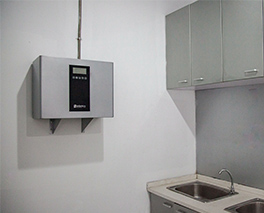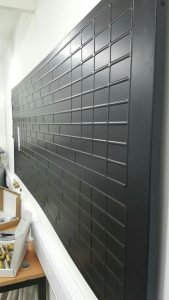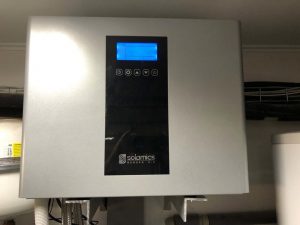
18 Jun WHY THE BUNSEN IS THE BEST THERMODYNAMIC HOT WATER SYSTEM AVAILABLE
Here’s a question…
Would you buy a top quality, state of the art sports car model, if internally, it had been fitted with the 1.5 ltr engine and a cassette player? The answer is most likely – no you wouldn’t!
We all know that it is the quality of the components that go into making an assisted technology device (whatever that device be), that ultimately defines how efficiently it will perform as a whole.
Solar power and home solar solutions are no exception. Much like any type of technology, solar systems must be designed and manufactured with high quality components, that match both their exterior shell, and can enable them to function in the way they were intended.
Solamics Bunsen Air had one key word in mind when they designed the Bunsen Air Thermodynamic Water Heating System, and that was “QUALITY”.
Creating a High Quality Solar Hot Water Heater
In order to create a high quality hot water pump, Solamics needed to test and incorporate only quality components into the Bunsen thermodynamic water heating system, that reflected the sheer excellence of what the system was designed to do… Produce enough hot water, day and night, whatever the weather, to supply any household – whilst still allowing a family, the flexibility and control to tailor the system to meet their own specific needs and indeed, save them money whilst supporting the environment.
This involved reflecting on the wealth of research and development into thermodynamic principle and heat pump system function, that the Bunsen Air designers had obtained over the 12 years that the system was in production.
Let’s take a look at some of the quality components discovered and used, that have put the Bunsen solar hot water system into a class of its own…
Rotary Compressor Technology
A huge driving force behind the power of a thermodynamic heating system , is the efficiency of its compressor, which is responsible for drawing in vapour from the hot water panels, before compressing it, and distributing it at a higher pressure to the condenser.
Most existing solar heat pumps use Piston compressors, but there have been numerous issues associated with such components…
Issues surrounding Piston Compressors
. They store air at a higher pressure than required at the point of use, meaning that recovery times can be affected as pressure must constantly be reduced to the required operating pressure.
. Their internal temperature is high, varying from 150 -200C, therefore, such high temperatures mean that moisture can be released and as they are unable to dry as quickly as a rotary compressor, this too can affect efficiency.
. Their duty cycle which is the amount of time they can operate without over heating is only 60-70%, meaning that 30% of the time they are unable to work.
Having initially trialled piston compressors in the Bunsen system, operational tests uncovered that the system was unable to reach the levels of power and efficiency required to make it the superior solar thermodynamic heat pump Solamics had intended, therefore, it was decided that rotary compressor technology could be the key to higher power and efficiency.
As rotary screw air compressors are often used where greater volumes of high-pressure air are needed and can be found within large industrial water systems or are integrated into the design of high-power air tools – meaning that incorporated into a solar domestic hot water system, could be extremely powerful.
They feature a number of benefits…
Benefits of rotary compressors
. The rotary air compressor is cooled with specialist fluids meaning that unlike the piston compressor, it has a 100% allowable duty cycle, allowing for continuous operation.
. With a much lower internal temperature of between 80-100C, the rotary compressor can cool itself down easily, the capability of the rotary compressor to lower its own temperature means that any internal moisture is eradicated.
. ‘Carry over’ oil which is used to lubricate the rotary compressor is far less than that of a piston, using several less times oil for operation
. According to a source, the rotary air compressor is also capable of delivering more air per unit at 4-5 cfm per hp as opposed to a piston compressor which delivers 3-4 cfm per hp, making the rotary compressor more efficient.
Fully Insulated and Quietly Powerful
Solamics integrated layers of quality sound proofing material into the design of the Bunsen Unit (much like a well-insulated home), to ensure that the system would not be disruptive when installed.
Later ERP testing revealed, that the Bunsen Air had operational sound levels of under 41 decibels – making it the quietest system of its kind on the UK market.
Bunsen Air Thermodynamic Solar Panels

With most existing solar hot water systems such as the Bunsen, only featuring one thermodynamic panel as standard, Solamics considered how incorporating two panels into any one thermodynamic water heating system, could improve system power and efficiency, equally to this, Solamics thought about how all existing system panels, only featured one exhaust pipe, so why couldn’t they feature two?
In the same way that a dual exhaust feature is known to improve a cars performance, Solamics Bunsen Air knew that by incorporating dual exhaust technology into the design of the Bunsen panels, they could create a panel that would make for superior power and efficiency, and this is how…
How dual exhaust technology makes the Bunsen Air of significant power and efficiency
All existing solar hot water panels feature one entry and one exit flow pipe, enabling the liquid refrigerant to move into and around the panel, before existing as a gas, however the Bunsen Air features ‘dual exhaust’ exit pipes, meaning that the ‘superheated vapor’ leaving the panels, is driven away faster and far more efficiently, which in turn makes for higher power and efficiency of heat production as the gas is then compressed back into a liquid and increase the water cylinder temperature.
All in all, the dual exhaust feature within the panels increased their performance by 30%!
Sophisticated Flow Chanel Technology
Alongside the dual exhaust feature, Solamics looked at how they could improve the flow channels of Bunsen Air heat pump – solar collector panels.
What they created are highly technical flow channels, which are critical factors to the Bunsen Air’s enhanced performance, these flow channels ensure even spread around the full panel area as the refrigerant heats up to a gas before exiting the panels via the dual exhaust exit pipes.
Working together with the dual exhaust feature, both the Bunsen Air thermodynamic panels are able to efficiently transfer the free energy from external weather conditions to the Bunsen controller, and increase the efficiency and speed of heating up your hot water.
Protected design
Solamics have collaborated with numerous other institutions, including a top University in China, which holds one of the highest engineering rankings in the World.
The specialized research centre belonging to this University, has been involved in thermodynamic technology over 15 years.
For this reason, Solamics have ensured that the unique and effective design of the flow channels and the dual pipe exhaust technology, are protected for their originality, and it is a valuable IP for the entire system.
Advanced Control Panel
You are able to take control and tailor the system to meet your individual hot water needs with the Bunsen’s advanced setting options. The intelligence of the Bunsen controller means that you can program your hot water at 3 operational time zones, and 3 target temperatures. Alongside this, there is an option to set the system to automatic mode, which means that it will turn on automatically when it detects a drop-in cylinder temperature.

Why choose the Bunsen Air Thermodynamic Hot Water System?
The Bunsen Air is currently the only system of its kind with integral components and design features, that surpass its competitors in terms of power and efficiency capabilities.
Astoundingly, despite these highly advanced components, the Bunsen still remains cheaper than its competitors, making it an affordable means so solar hot water generation. Manufacturers designed this system to suit the needs of homeowners, so therefore the price must reflect this, otherwise, if no one could afford it… what was the point?


